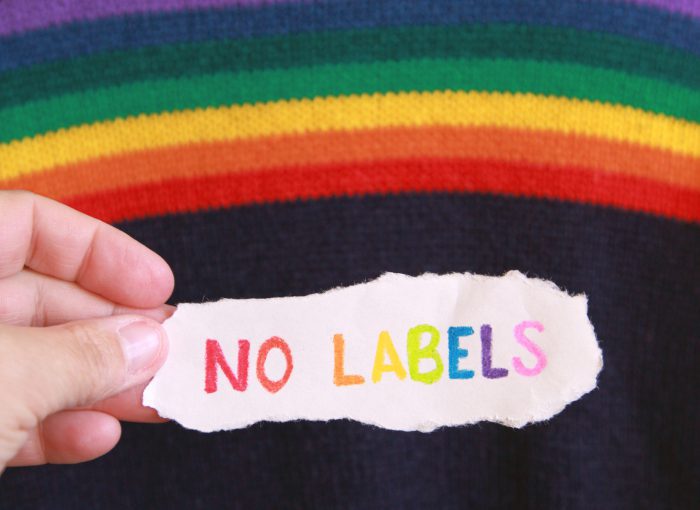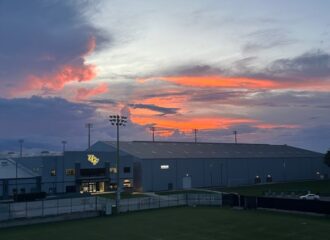By Lindsey Wright
I’ve always considered LGBTQIA+ to be a mouthful of an acronym. Understandably, many people, myself included, often shorten it to LGBTQ+. I remember for a while not even knowing about the I and A, and then even after hearing about them not being sure what they stand for. Eventually, through attending a presentation by UCF’s LGBTQ+ Services, I came to learn that the I stands for intersex, which describes someone “born with differences in their chromosomes, genitals, or reproductive anatomy, compared to the usual two ways that bodies develop.” However, learning about the A was somewhat less clear-cut. Some wrongly claim that the A stands for ally. This is not the case; the A is for asexual.
Asexuality tends to be overlooked as a sexual orientation; I’d never even heard of it before 2018 and didn’t understand it until much more recently. Many people who don’t regularly engage with queer culture don’t know what it means to be asexual, and even those who do are often unsure. We commonly associate the term with biology class and plant reproduction instead of human beings. Asexual, or ‘ace,’ individuals experience little to no sexual attraction. Asexuality is a spectrum, so people experience it in different ways. Some common identities on the asexuality spectrum include demisexuality, or someone who only experiences sexual attraction after forming a strong emotional connection with another person, and gray-a/gray-ace, or someone who identifies somewhere between asexual and allosexual. Allosexual is a term commonly used in the asexuality community to refer to those who do experience sexual attraction. UCF’s LGBTQ+ Services offered the helpful metaphor of asexuality as an umbrella, with identities such as demisexuality and gray-ace falling underneath the umbrella.
A common misconception about asexuality is that asexual individuals don’t want to have sex. While this is true for sex-repulsed aces, who feel disgusted and put off at the thought of sex, sexual attraction does not equal sexual desire. There are also aces who feel indifferent or neutral (Wareham) about sex, who may engage in some sexual activities for the sake of their partners or for reproduction purposes, and sex-favorable aces (Wareham), who enjoy sex for a variety of possible reasons. The asexual label is just about sexual attraction, not sex drive. However, this too is a spectrum, and even sex-favorable aces may still feel repulsed by certain sexual activities. In a relationship with an asexual individual, it’s important to learn what asexuality means to them, as well as what they are/are not comfortable with sexually, as you would in any relationship. UCF offers workshops on consent and violence prevention in relationships through Victim Services and the Let’s Be Clear campaign, which I encourage you to attend to learn what goes into a healthy relationship.
Many aces do want relationships, regardless of their stance on sex. While allosexual individuals tend to link romantic and sexual attraction together, as the two go hand in hand in their experiences, aces tend to separate the two. A sex-repulsed ace may still experience romantic attraction to the same gender and identify as homoromantic, or to individuals regardless of gender and identify as panromantic. This differentiation between sexual and romantic attraction makes sense for aces, as they experience sexual attraction differently than allosexual individuals or not at all. Identifying as aromantic, or experiencing little to no romantic attraction, is also a possibility, and individuals who are both aromantic and asexual tend to refer to themselves as aro-aces. Like asexuality, aromanticism is also a spectrum/umbrella (with demi- and gray- identities, as well as others), and both allosexual and asexual individuals identify as aromantic.
UCF has a thriving LGBTQIA+ community, but similarly to other queer spaces, asexuality is less prevalent than allosexual orientations.
While the Multicultural Student Center and LGBTQ+ Services work to make the campus an inclusive environment for all, that doesn’t mean that those who don’t directly involve themselves with these services will feel those effects.
For example, while this LGBTQ+ Guide to Campus provides a definition of asexuality, it doesn’t offer any specific guidance for asexual individuals. College is a time for discovering yourself and exploring your identity, and this can be especially difficult for aces. I’ve heard many accounts of asexual people initially start out identifying as bi or pan due to feeling generally the same way about most people from a sexual standpoint. It’s hard to identify the lack of an attraction you’ve never felt before. If you think you might be asexual, it’s important to remember that, as with all sexual orientations, identity is fluid and whatever you’ve identified as in the past, it’s always okay to choose a new label or no label at all. Especially with asexuality, you don’t have to try out sex to figure out whether you’re asexual or not, and you can identify as asexual even if you’ve enjoyed having sex in the past or still do. At the end of the day, it’s just another label, and while labels are important for understanding ourselves and finding community, they do not define us.
As UCF students, we need to work to support the asexual community. Luckily, being an ally is fairly simple, and reading this article was the first step! The main thing you can do to act as an ally to aces, as with the LGBTQIA+ community in general, is to educate yourself about what it means to hold an identity different than your own. Look over the LGBTQ+ Guide to Campus and be aware of the services UCF provides. Don’t assume someone needs sex, romance, or even a relationship to be happy, and believe them when they tell you that. Lastly, help to combat ace-erasure by calling it out when you see it and remember that while allyship is important, the A is for asexual.






